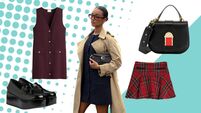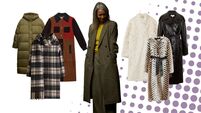Here are three ways I made my wardrobe more sustainable — thanks to my husband's shirts

Deirdre McArdle with her daughter Daisy, 5, cutting and sewing salvaged clothing in order to create their own more sustainable wardrobe. Picture: Chani Anderson
Fashion is big business — globally, the market is worth $1.7 trillion. The rise of fast fashion in the 90s propelled the already thriving industry into the stratosphere. Fashion is big business, but it’s also a big problem.
“The fashion industry is one of the biggest polluters. It’s up there with Big Oil,” says sustainability journalist, Jo Linehan.
“The process uses fossil fuels, it produces a lot of waste, and there are supply chain issues.”
The problem is we’re lapping it up, says Linehan. “We’re constantly being pushed to buy new, and we’ve stopped seeing the value of the clothes we’re buying. We’re wearing them once or twice and binning them or donating them to charity.”
But there’s an issue there too. We need only look at Accra in Ghana, the largest importer of used clothing in the world, to get an idea of the waste we’re creating. The piles of dumped clothing are so huge, they can be seen from space.
CLIMATE & SUSTAINABILITY HUB
But things are starting to change, albeit at a glacial pace. Under new EU legislation, greenwashing - the practice of misleading consumers with false green claims — is being punished, and brands such as Asos, Boohoo and Primark have been penalised.
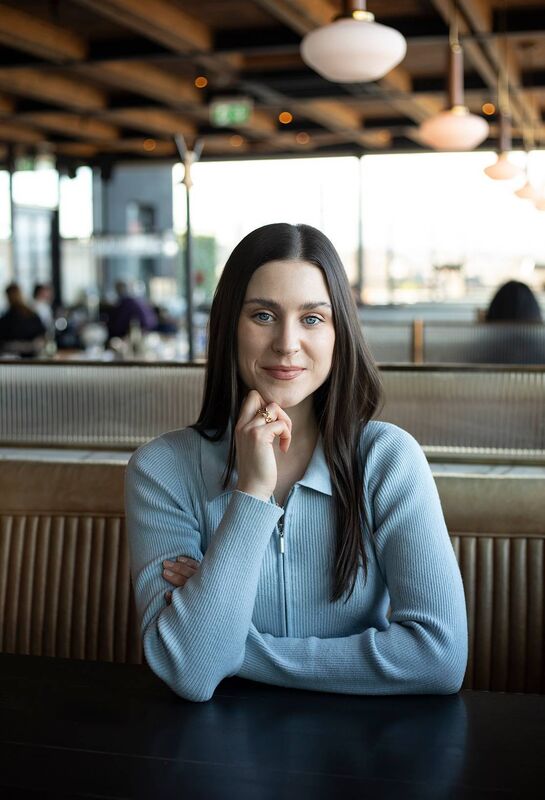
The impending Corporate Sustainability Reporting Directive (CSRD) will mean companies have to prove their sustainability claims.
“It’s a critical time for the fashion industry. The tide is definitely turning,” says Linehan.
For the tide to truly turn though, we need to make changes too.
At the start of the year, I pledged to change the way I shop, and set about trying to create a more sustainable wardrobe.
I focused on shopping my wardrobe, repurposing and mending my clothes, and shopping second-hand.
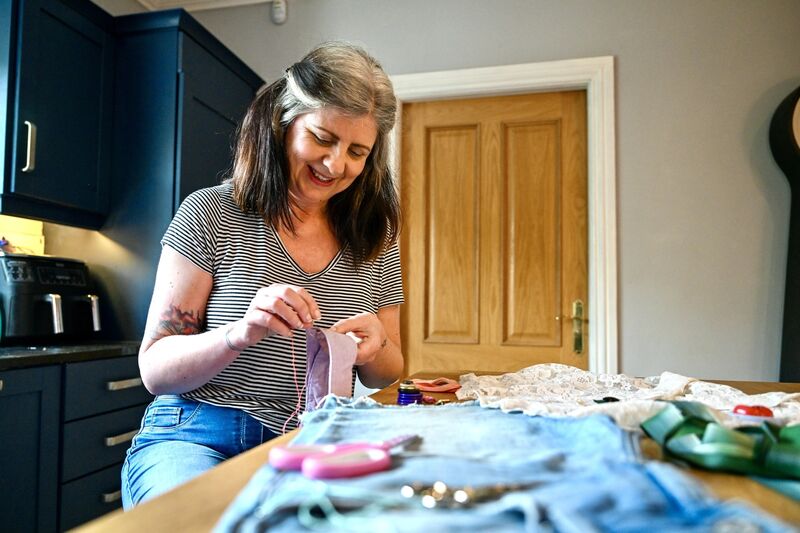
“The first step in shopping your wardrobe is organising your wardrobe,” explains Kate Beavis, vintage shopping enthusiast and @fearlessat50 on Instagram.
“Get everything out and group items together — blouses, shirts, dresses, trousers. You can create some more order by grouping items by colour too, much like you’d see in a shop.”
The idea, according to Beavis, is to get a clear picture of what you have. That way you can easily ‘shop’ for what you want, but you can also see what you don’t have or what you need.
“That way you’re shopping more mindfully, and buying things you actually need and not just want.”
When we think about fashion and our wardrobe more mindfully, we move from reacting to trends and clever fashion industry marketing, to only buying what we need.
“Often when we have a special occasion we’ll typically say ‘oh, I need a new outfit’ for that. But where’s the rule that says we need something new? instead think ‘what do I have in my wardrobe that I could wear’,” says Beavis.
"‘You might have something in there that you haven’t worn in a few years, take it out and try it on. If you want to make it feel new, jazz it up with some accessories and maybe borrow a bag or shoes from a friend. We need to normalise this approach.”
I’ve been shopping my wardrobe since January. I’ve learned a few things since then.
First, you’d be surprised what gems you can uncover in your own wardrobe once you start excavating it.
I also realised I tend to buy too much of the same thing: I have four denim shirts, I have too many grey tops, and I have far too many of the same kind of dresses.
Putting outfits together from my wardrobe has been challenging and fun.
The welcome return to bootcut and wide-leg trousers means all those jeans I’d kept from the noughties are right back in fashion, and I’ve been embellishing some tops that could do with a lift.
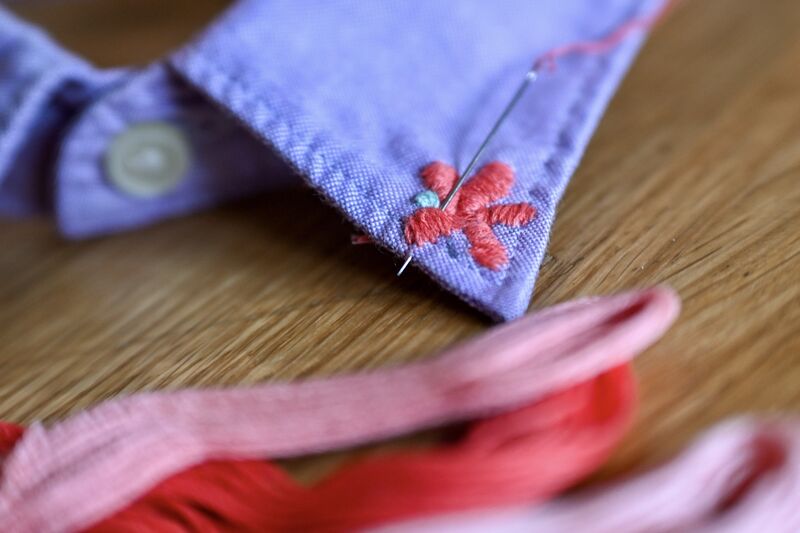
Repurposing and mending items from your wardrobe is a great way to make the most of what you already have, says Kim O’Driscoll, mender extraordinaire with Project Prolong.
“There are some simple fixes you can do at home, like replacing missing buttons and fixing small holes.” Visible mending, where you make a feature of the spot you’re fixing, has become popular, thanks to TikTok, and O’Driscoll says it’s a relatively easy technique because you’re not trying to hide anything.
“Think floral patch on a pair of jeans, or an embroidered flower to cover a hole in fabric,” she says. ”By mending clothes we’re prolonging their life and creating a history. I was working on a denim jacket recently that belonged to my client’s grandfather and I could see where the grandmother had already mended the jacket.”
Even if items of clothing get beyond the repair stage, O’Driscoll says you can still make good use of them. “A pair of jeans can be easily turned into a pair of denim shorts, and stained cotton t-shirts can be cut up to make cloths,” she says.
The goal is, before you throw something out or put it in a bag for the charity shop, think “Can I do anything with this?”
My husband was doing a clearout of shirts recently. I took the shirts and cut off the collars. I embroidered designs onto them and replaced the single button. I now wear these collars with round-necked tops for a different look, and I’ve used some of the shirt fabric to make painting smocks for my five-year-old.
How we take care of our clothes can make a difference too and keep them looking good for longer, says O’Driscoll.
“Store knitwear in cotton tote bags to keep moths away, de-pill those wool jumpers to make them look like new again, and take note of washing and care instructions on your clothes. When you look after your clothes or mend them, you develop an appreciation for the garment and that’s an important part of the mindset shift.”
Sustainable fashion influencer @emilyennistymon on Instagram, Emily Ryan, is all about that mindset shift. “When you become more aware of the quality and cut of a garment or the fabric it’s made from, you become less concerned with trends and brands. It’s a slow shift that happens naturally. By focusing on the fabric, you’re coming at it from a more creative slant. You start asking, how could I wear this piece to suit me.”
Ryan is a vintage clothing aficionado and shops almost exclusively in second-hand or vintage shops. She looks at clothes with a different lens. “I might see a top made in a lovely fabric, but I don’t like the sleeves. Rather than leave it, I’ll buy it and cut off the sleeves. It’s all about experimenting and discovering your style, and being more deliberate,” she says.
“Sometimes you need to stop and think about why you are shopping.” What I’ve noticed since I’ve been buying vintage or second-hand is it allows me to make a style statement. And it feeds into the creative side of my brain that likes making tweaks and creating a signature look.
By shopping my wardrobe, mending and repurposing my clothes, and embracing second-hand, I’ve started to feel more positive about my wardrobe: it reflects me better, it’s less chaotic, I don’t feel the need to buy new clothes for every occasion, and, of course, it’s more sustainable.









